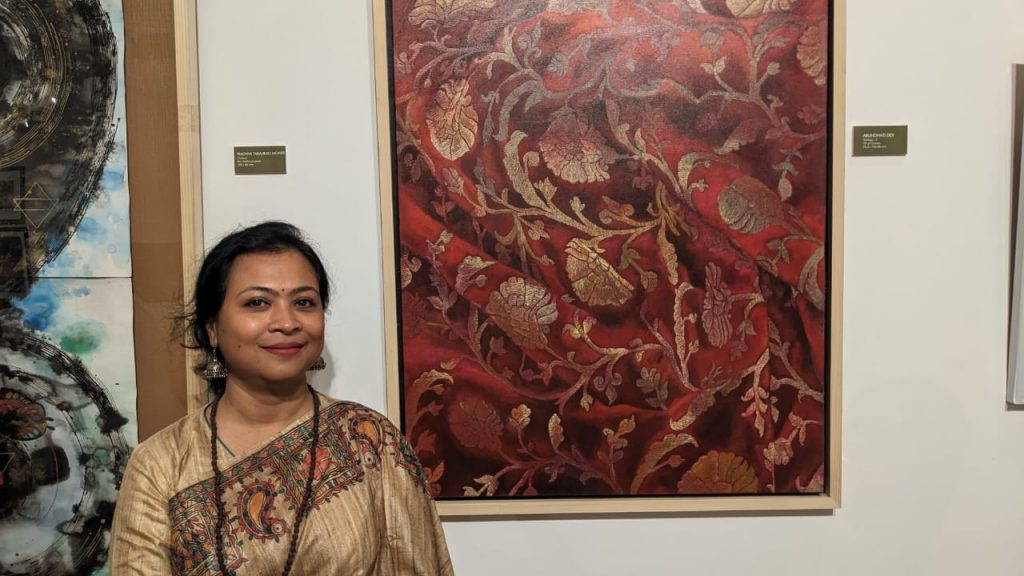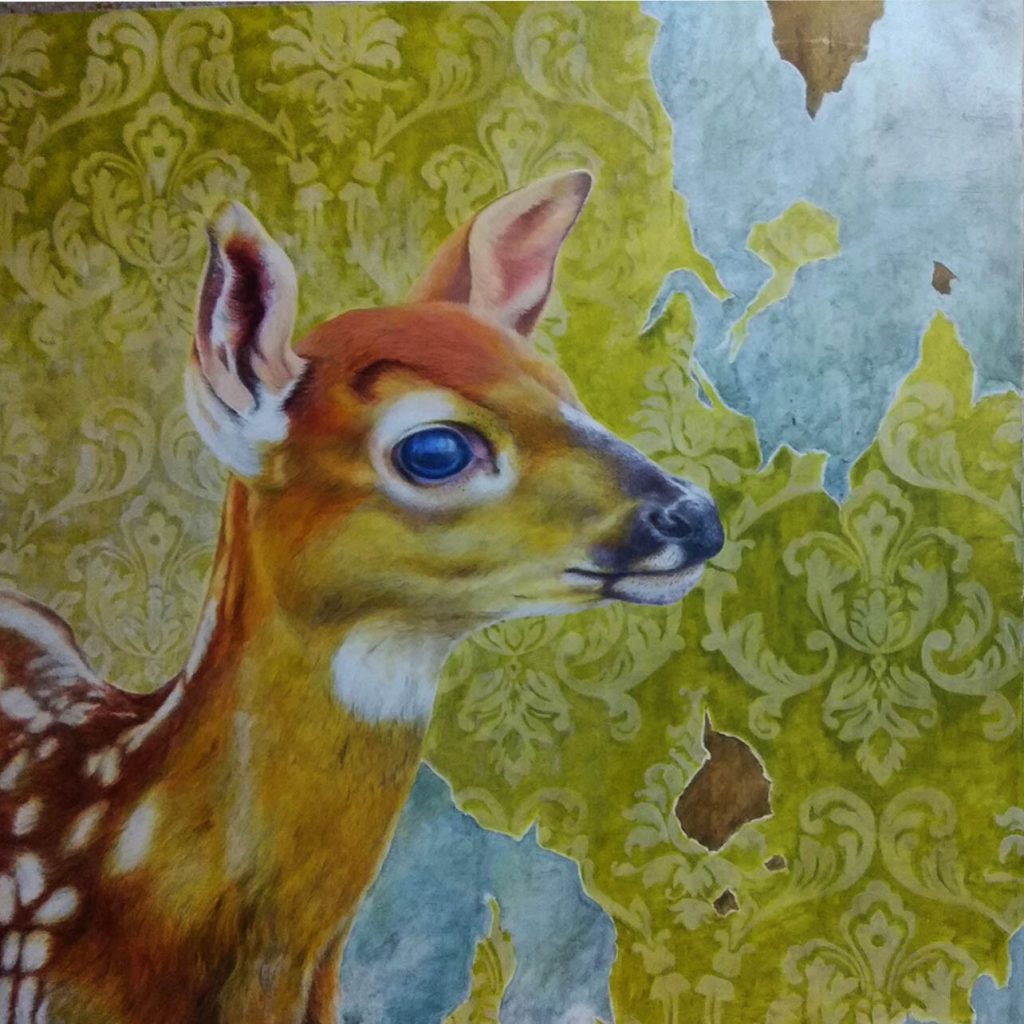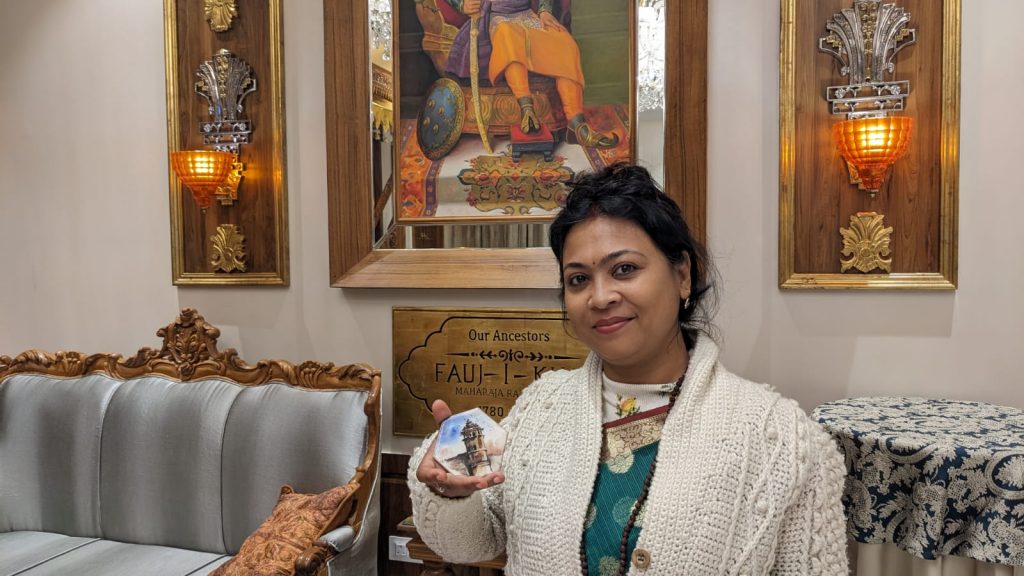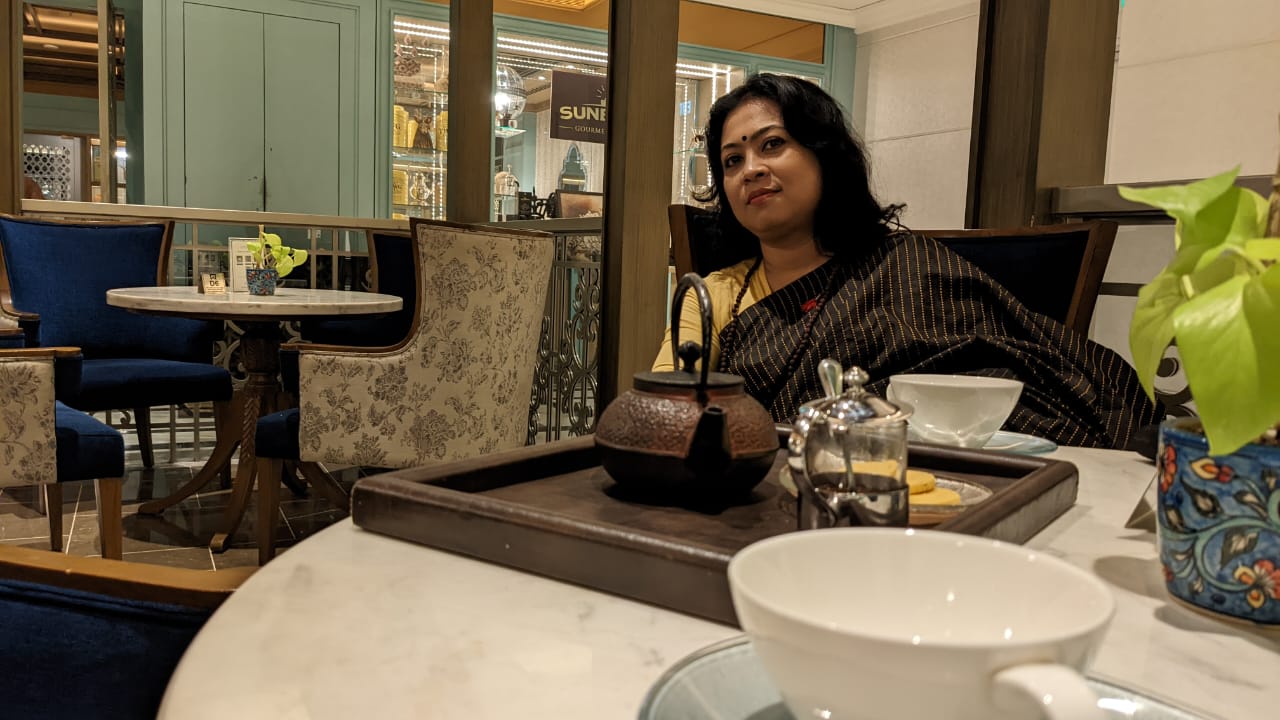Your Banarasi saree series is more than just art—it’s a cultural love letter. What drew you to this timeless textile?
As an artist, my creative practice is rooted in the desire to make art that is unconditional—art that transcends boundaries and speaks to the collective soul of society. I believe that true artistic inspiration doesn’t arise suddenly; it is shaped by the world we grow up in—our social environment, cultural roots, family traditions and the inner landscape of our thoughts and emotions.
One subject that has captivated me over the years is the Banarasi saree. It is more than just a garment—it is a symbol of heritage, craftsmanship and emotion. Coming from a Bengali family, my connection to the Banarasi saree is deeply personal and nostalgic.
In our culture, the Banarasi saree holds immense significance, especially in weddings. It is customary for brides to wear it as a mark of elegance and tradition. These sarees often become heirlooms, passed down through generations, each carrying stories of love, pride and family history.
I still vividly remember when my grandmother gifted me her Banarasi saree. I was around eight or nine years old. It was handwoven with intricate gold and silver zari work, glowing with royal elegance. When light touched its surface, it shimmered with a brilliance that felt magical. That saree became more than just a memory—it became a symbol of time: past, present and future, woven together like threads in a tapestry.
This emotional connection inspired me to create a painting that captures the opulence, poetry and legacy of the Banarasi saree. Through this work, I aim to honor Indian textile traditions while reflecting on how memory and identity are intertwined.

You’ve described sarees as ‘gorgeous sentiments’—can you share the emotions behind one of your most personal pieces?
I love to create art that speaks unconditionally to society. My painting on the Banarasi saree stemmed from years of internal reflection and emotional attachment. Growing up, I saw how every Bengali bride wore a Banarasi saree—it was part of our cultural identity.
When I was a child, my grandmother gifted me her Banarasi saree. The rich gold and silver zari work, the way it glowed under light, created a mesmerizing brightness and uncanny depth that still lingers in my memory. That moment didn’t just stay in the past—it lives in my canvas. It taught me how art can preserve time and emotion and how the folds of a saree can carry generations of untold stories.
How do you fuse heritage and modernity in your work without losing the essence of either?
The Banarasi saree is deeply rooted in Varanasi’s artistic legacy. Dating back to the 14th century, artisans began weaving intricate silk brocades using gold and silver threads. My aim as an artist is to take this historical richness and reinterpret it through a modern medium—oil painting.
Interestingly, oil painting itself has ancient origins, with early examples found in Buddhist murals from 7th-century Bamiyan. So in a way, both my subject and medium carry historical value. I simply give these traditions a contemporary canvas.

From canvas to couture—what challenges do you face when translating visual art into fabric and textile design?
To me, there is no conflict between textile design and fine art. Instead, I seek to create harmony between the two. I’m fascinated by the depth of light and shadow reflected on fabric drapes, and I bring that into my oil paintings.
I find inspiration in everyday objects and motifs from my surroundings. Whether I’m working with paint or textile patterns, I seamlessly move between mediums to explore the interplay of color, texture and form. My goal is always the same: to create visually captivating compositions that evoke feeling and thought.
What role do Indian folk motifs play in preserving cultural identity through art?
Indian folk motifs are vital in preserving cultural identity. They are visual storytellers of our traditions, values and beliefs—passed down through generations. These motifs carry the artistic essence of communities and reflect their way of life.
Mythology plays a major role in this context. Indian folk paintings are a kaleidoscope of colors and symbols shaped by oral traditions, religious beliefs and community rituals. This link between mythology and art forms a bridge between the past and present, keeping our cultural heritage alive.
Tell us about the incomplete painting you couldn’t resist sharing—what made it too special to keep hidden?
I was preparing a painting for submission to a national award competition, but as the deadline approached, the work remained incomplete. Still, the canvas had already captured a rich, royal, vibrant expression—and I felt it had its own power.
Even in its unfinished state, it told a story that deserved to be seen. I couldn’t resist sharing it with my audience because it wasn’t just a painting—it was my saree, my emotion, my identity on canvas.

If your art could start a conversation across generations, what message would you want it to carry forward?
My art practice is about more than textile or design—it’s a celebration of India’s rich, royal, traditional lifestyle. For decades, this legacy has continued through generations, and through my work, I hope to showcase the beauty of our culture, diversity in design and emotional depth that binds our past with the future.
With fast fashion on the rise, where do you see the future of handloom and heritage-inspired art like yours?
Despite the rise of fast fashion, the future of handloom and heritage-inspired art is promising. There is a growing global shift toward conscious consumerism, where people seek sustainability, ethical production and deeper meaning in what they wear and use.
This evolving awareness is reviving interest in handloom fabrics, with more people recognizing the craftsmanship and cultural storytelling embedded in every thread.
How can platforms like Instagram and digital galleries be better utilized to promote female artists working with traditional crafts?
Platforms like Instagram and digital galleries are powerful tools that allow female artists to bypass traditional barriers and reach a global audience. They foster storytelling, build communities and open space for meaningful engagement.
When used effectively, these platforms let us showcase not just our work but the stories, values and heritage behind it—helping more people understand and appreciate traditional crafts.
You’re deeply rooted in preserving textile heritage—what’s your vision for reviving dying arts and ensuring they stay relevant for the next generation?
To revive dying textile arts, we need to create a dynamic ecosystem that respects tradition while embracing innovation. That means empowering artisans, building stronger market linkages and encouraging collaborations that blend old techniques with contemporary design.
Education is key—whether through exhibitions, social platforms or mentorship. By making heritage crafts relevant to modern lifestyles, we ensure they not only survive but thrive.


0 Comments